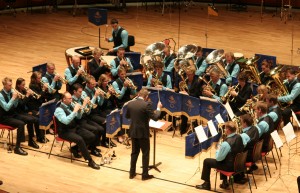Listen and you hear people decrying all types of agendas, including “personal agendas,” “hidden agendas,” and “political agendas.”
Even the simple business agenda riles the rebellious.
The rap? Agendas are time consuming to create. They’re a bother to follow. They inhibit creativity.
Nonsense! In the spirit of the late author William Safire, with whom I shared a love of language and Bernese Mountain Dogs, the nattering nabobs of negativity have probably never experienced the power of a potent agenda.
The simple agenda is an awesome tool for getting things done quickly, respectfully and responsibly at meetings.
If you’re having a meeting, you should have an agenda—basically a structured outline. You become a conductor making beautiful music rather than a cop trying to control an unruly crowd.
The particular advantages of an agenda include:
- Laser beam focus and clarity. You know why you’re meeting and what you plan to cover—and ideally accomplish.
- Common understanding. Others participating in the meeting know the point of the meeting and what is expected of them.
- Discipline. You’re more likely to stay on track rather than derail and go off on tangents. Good meeting agendas are similar to business strategies. Agendas are as much about what you’re not going to do as what you will do.
When you create an agenda, you should include the desired outcomes for your meeting, the type of meeting (such as project update, planning, brainstorming or whatever), the topics you plan to cover with the allotted time, and who’s responsible for each. Also try to specify for each topic whether the item is for information, discussion, brainstorming and/or decisions. The level of specificity will give the meeting some more helpful structure.
For a plug and play meeting agenda, help yourself to The LEAN COMMUNICATION® meeting agenda, which you can download here.
As background, my experience with agendas is a long and rewarding one. I was first exposed in high school through FBLA (Future Business Leaders of America). Initially, the commitment to agendas provided me a ticket to the Fontainebleau Hotel in Miami Beach for FBLA’s national competition in parliamentary procedure.
Even though the mock business meetings were an artificial setting, I saw the benefits of agendas. And as a result, I have used them consistently throughout my career.
I try not to play the heavy, recognizing that some people need to experiment with various degrees of agenda configuration before they settle on a format that works for them.
In fact, in the past week, two clients recognized that their rather cavalier attitude toward agendas was contributing toward ineffective meetings. With my help and support, they’ve now become converts to well-thought agendas.
What about you?


0 Comments